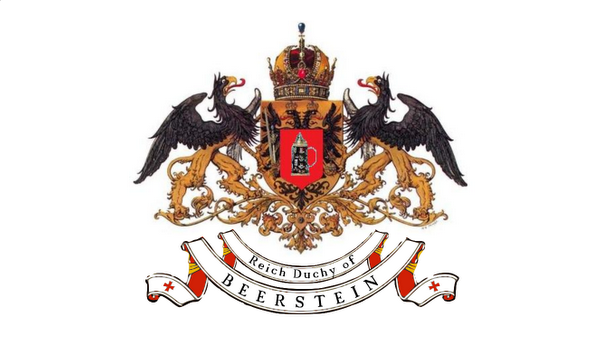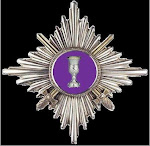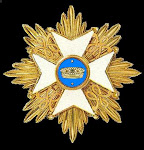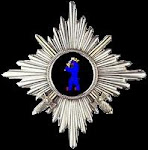 Commander in Chief: Reich Duke Wilhelm, ADC Major Debauchery
Commander in Chief: Reich Duke Wilhelm, ADC Major DebaucheryHeavy Cavalry Brigade: Prinz Wilhelm II, ADC Capt Gunter Stout
Pilsner Horse Grenadiers and Corona Cuirassiers
Light Cavalry Brigade: Major General, Baron Geoffrey Lista, ADC Capt Dos Equis
Holsten Leib Hussars and Hoegaaden Lancers
Guard and Grenadier Brigade: General, Graf James von Beerstein, ADC Capt Heinrich Porter
Honorable Pensioners, Leib Grenadiers, Landbier Grenadiers, Oldenburg Grenzers
1st Brigade: Major General, Baron Adolf Coors, ADC Capt Heineken
Amberbock Fusiliers, Auerbrau, Lowenbrau, and Guinness Musketeers
2nd Brigade: General, Baron Rupert von Pilsner, ADC Capt Bock
Warsteiner Fusiliers, Pabst, Isenbeck, and Carlsberg Musketeers
The Reich Duchy of Beerstein forces disembarked from Austrian transport ships on 17 December just north of Messina. Within several kilometers march inland, Reich Duke Wilhelm was confronted by the Army of Sicily commanded by King Joseph. The Beerstein Army was hastily formed into Line of Battle. The left flank was commanded by Prinz Wilhelm II, with his Heavy Cavalry Brigade formed on the extreme left of the army. The Slitz Light Artillery Battery took up a position on a low ridge line to support the heavy cavalry. The First Infantry Brigade and the Ales Heavy Artillery Battery formed the center of the battle line. The Guard and Grenadier Brigade were held in reserve behind the First Infantry Brigade. Reich Duke Wilhelm posted the Second Infantry Brigade and the Light Cavalry Brigade to cover the right flank of the army.
The Battle of Messina opened with the Beerstein Ales Heavy Artillery Battery firing on the Sicilian Heavy Artillery. After several barrages, the Ales Battery seemed to be gaining the upper hand.
As the Amberbock Fusiliers advanced in the center, they were engaged by the Sicilian Heavy Artillery Battery. Eventually, heavy casualties forced the Amberbock Fusiliers to fall back under the protection of the Guinness Musketeers. Despite sustaining many casualties from the Sicilian Light Artillery Battery, the Pabst Musketeers managed to hold their position. Seeing the devastating effect of the Sicilian Light Artillery, the Holsten Leib Hussars bravely charged the battery. The Sicilian Light Battery fired into the Hussars at close range, and fled for their lives. Since the guns were supported by Sicilian Grenadiers, the Holsten Hussars were forced to retire without spiking the guns. However, their gallant charge saved the Pabst Musketeers from total destruction. The Hoegaaden Lancers followed the hussars and engaged the Sicilian 8th Line Infantry Battalion, forcing them to retire. Unfortunately, the lancers took many casualties and wisely retired along side the Holsten Leib Hussars. As the Light Cavalry Brigade attempted to recover from their gallant charge, they came under fire by the Sicilian Grenadiers. Increasing casualties forced the Light Cavalry Regiments to retire behind the Second Infantry Brigade.
On the left flank, Prinz Wilhelm II led his Heavy Cavalry Brigade in a desperate attack on two advancing Sicilian Infantry Battalions. The Pilsner Horse Grenadiers engaged the Sicilian 11th Line Battalion, while the Corona Cuirassiers charged the 12th Line Battalion. Despite the success of both cavalry regiments, they were forced to retire due to heavy casualties. In support of Prinz Wilhelm, the Slitz Light Artillery fired into the weakened Sicilians forcing the the 11th and 12th Battalions to retreat with heavy casualties. As the Sicilian Heavy Cavalry advance to fill the gap caused by their fleeing infantry, Prinz Wilhelm's weakened brigade sought refuge behind the light battery.
On the right flank, the Warsteiner Fusiliers engaged the Sicilian 2nd Line Battalion. Although both units sustained a steady stream of casualties, neither would retire. The Carlsberg Musketeers were fired upon by both the Sicilian 1st Line Battalion and the 1st Grenadier Battalion. Despite heavy casualties, the Carlsbergers refused to retire. When the Guinness Musketeers attempted to relieve the pressure on the Carlsberg Battalion, they were bombarded by the Sicilian Heavy Artillery Battery. After several salvos, the Guinness Musketeers became unsteady, but held their ground.
In the center, The Ales Heavy Battery fired on an advancing Sicilian Hussar Regiment. After several blasts, the hussars were forced to retreat with very heavy losses. The Oldenburg Grenzers then passed through the Ales Battery to attack the advancing 7th Sicilian Line Battalion. After a fierce struggle, the Grenzers were repulsed. Upon regrouping, the Grenzers attacked the 7th again. This time they forced the 7th to retire disorganized. Sensing victory, the Grenzers attacked the 7th Line for a third time. Casualties were so heavy on both sides, they both routed. The gallantry of the Grenzers stabilized the center and allowed the Guard and Grenadier Brigade to deploy.
Although the center was secured, the right flank was beginning to crumble. The Warsteiner Fusiliers continued their fire fight with the 2nd Line Battalion. The weakened Carlsberg Musketeers were again fired on by the 1st Sicilian Grenadiers and were forced to retreat when the Grenadiers charged. Reich Duke Wilhelm ordered a general withdrawal when the Guinness Musketeers were also forced to retire. Under the cover of darkness, the Beerstein army was able to slip away. Although the Sicilian Army was in no condition to press their victory, King Joseph was content to hold the field of battle.

















1 comment:
Enjoying the Sicilian campaign.
Merry Christmas and Happy New Year
-- Allan
Post a Comment